A Canada goose (Branta canadensis) floats serenely in a lake in North Park.
-
Grace Lutheran Church, Troy Hill
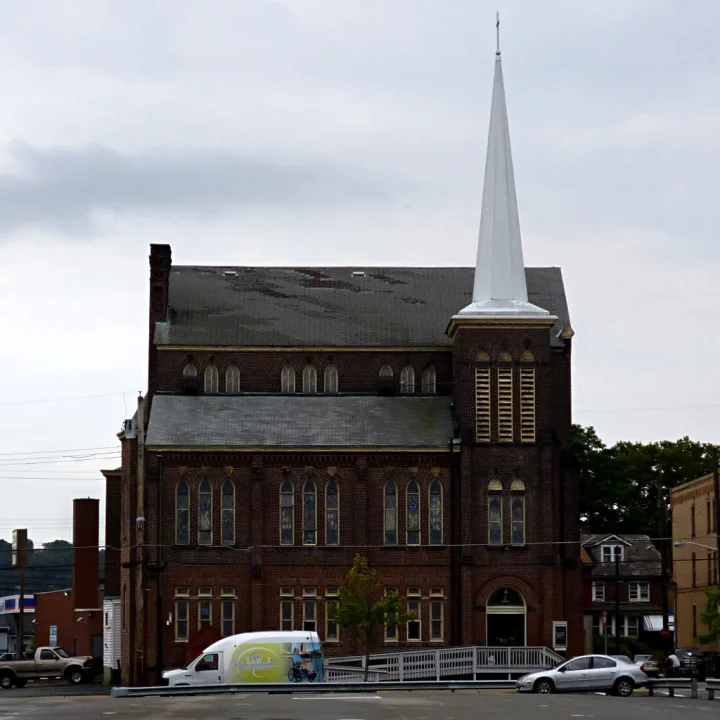
Taller than it is long, Grace Lutheran Church occupies a tiny space in the narrow streets of Troy Hill, a traditionally German neighborhood straddling a narrow hilltop above the Allegheny.
One response
-
Lobby of the Arrott Building
Frederick Osterling’s Arrott Building, the most ornate of the famous Fourth Avenue towers, has a small but gorgeous lobby filled with marble and brass.
-
A New Tower Rises
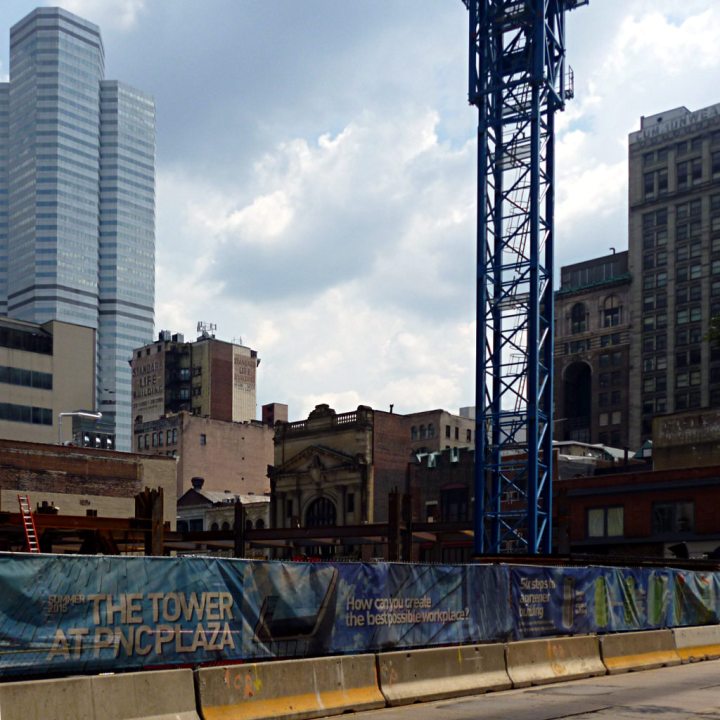
The Tower at PNC Plaza, the biggest skyscraper project in Pittsburgh since the 1980s, has just begun to rise at the corner of Fifth Avenue and Wood Street. Traditionally skyscrapers have grown in a doughnut-shaped area of the Golden Triangle, with the hole in the Fifth Avenue shopping district; but now that much of the shopping has moved elsewhere, the hole may begin to fill in.
-
Harmony
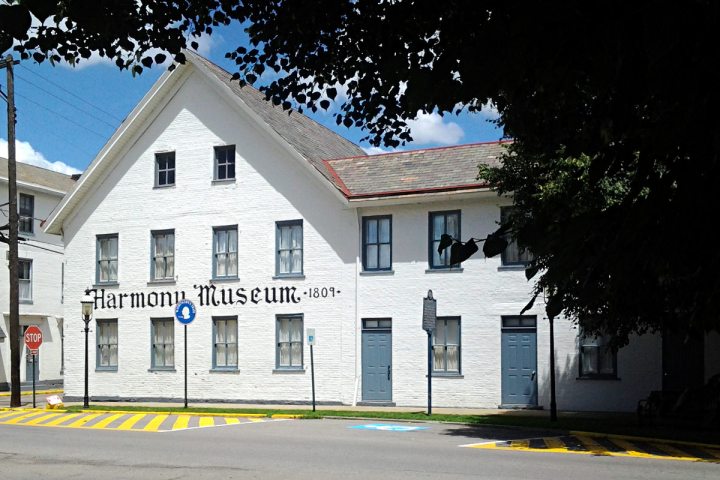
The Harmony Society was one of those colorful cults that flourished in the United States, the universal refuge for religious sects too peculiar for Europe. This particular sect fled Lutheran persecution in Germany, and old Pa Pitt will pause for a moment while his American readers digest the phrase “Lutheran persecution.” The refugees established a communist utopia at Harmony, about thirty miles north of Pittsburgh, in 1804. Ten years later they moved to New Harmony in Indiana (because they thought the climate would be better for wine grapes), but about a decade after that they were back in Pennsylvania, this time at Economy, now “Old Economy Village” in Ambridge.
The Harmonists, like many of the cults of that era, were hard workers, and were more successful in business than they were in establishing a religion. The village of Harmony still stands today, with many of the houses the Harmonists built. There is probably a greater concentration of original log houses in Harmony than anywhere else in western Pennsylvania. Today the town is full of little craft shops, which would doubtless have pleased the Harmonists, even if the morals of the current residents would not have met with their approval.
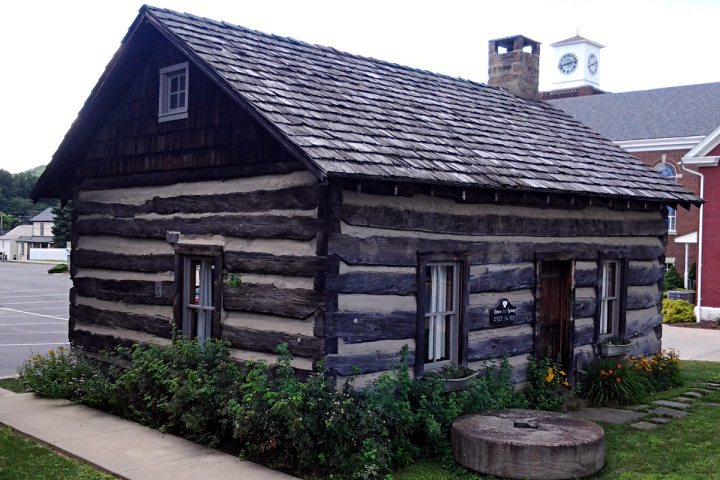



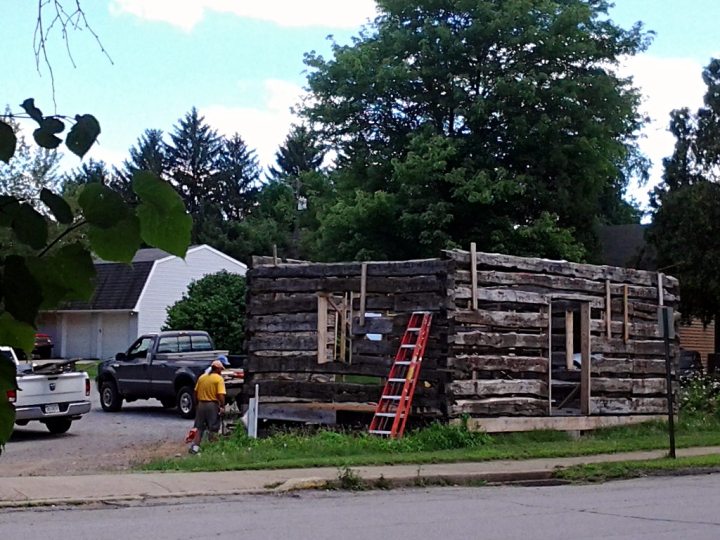
The log house above has been stripped down to the original logs, probably in preparation for restoration.

The Bank of Harmony building dates from after the era of the Harmony Society, but it is a very good design in its own humble way.
3 responses
-
Victoria Crowned Pigeons at the Aviary
William and Mary, two Victoria Crowned Pigeons (Goura victoria), rule—at least in their own minds—the Tropical Forest at the National Aviary. William is above; below, two poses from Mary.
-
Rainbow After the Storms
Destructive storms swept through Pittsburgh all day, causing millions of dollars’ worth of damage in floods. But after the storms came a reminder that, after all, things could have been worse.
-
Mary Roberts Rinehart Lived Here
The Circular Staircase was one of the greatest bestsellers of all time, and Mary Roberts Rinehart lived here when she wrote it—just half a block up Beech Avenue from the house where Gertrude Stein, a writer with a somewhat different style, was born. The success of The Circular Staircase made Mary Roberts Rinehart one of the most powerful literary figures in America, and her good business sense consolidated that power into a publishing empire for her family.
One response
-
Romanesque Details in Allegheny West
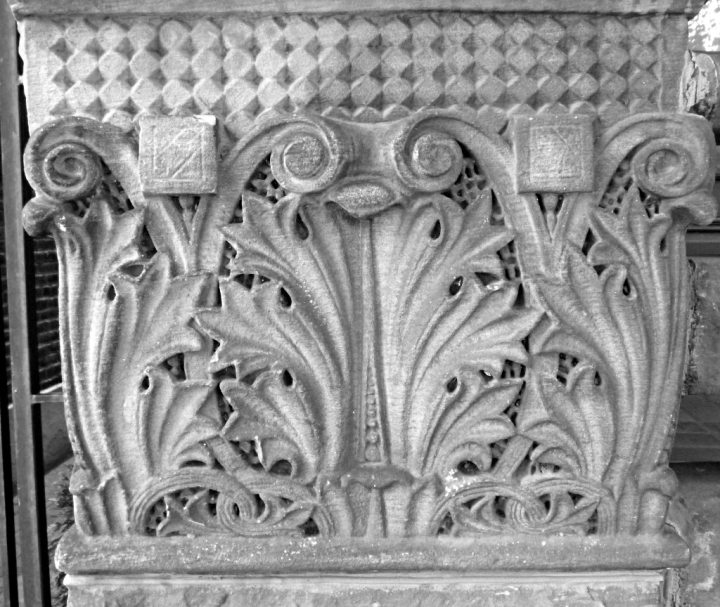
Architectural historians tend to call everything Romanesque revival “Richardsonian Romanesque,” and with especially good reason in Pittsburgh: Richardson’s Allegheny County Courthouse created a mania for everything Romanesque in Pittsburgh, and many private houses were built in that style for the wealthy merchant classes—especially in Allegheny West, which in the late nineteenth century may have been the richest neighborhood per capita in the country.
UPDATE: Note the very interesting comment from “Mark”: “Much of the local stone carving as well as work across the North Side, downtown, Carnegie Mellon University, etc was done by Achille Giammartini who built the house at 1410 Page St, near Page St & Manhattan St, in Manchester (beside Allegheny West). Although this was his personal residence he used the exterior as a ‘billboard’ for his considerable skills.” See our article on the Achille Gammartini House.
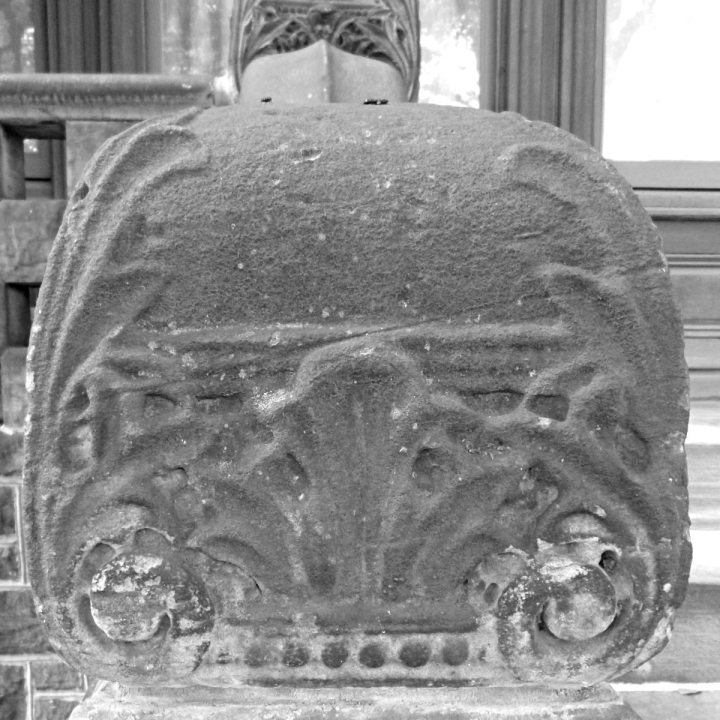
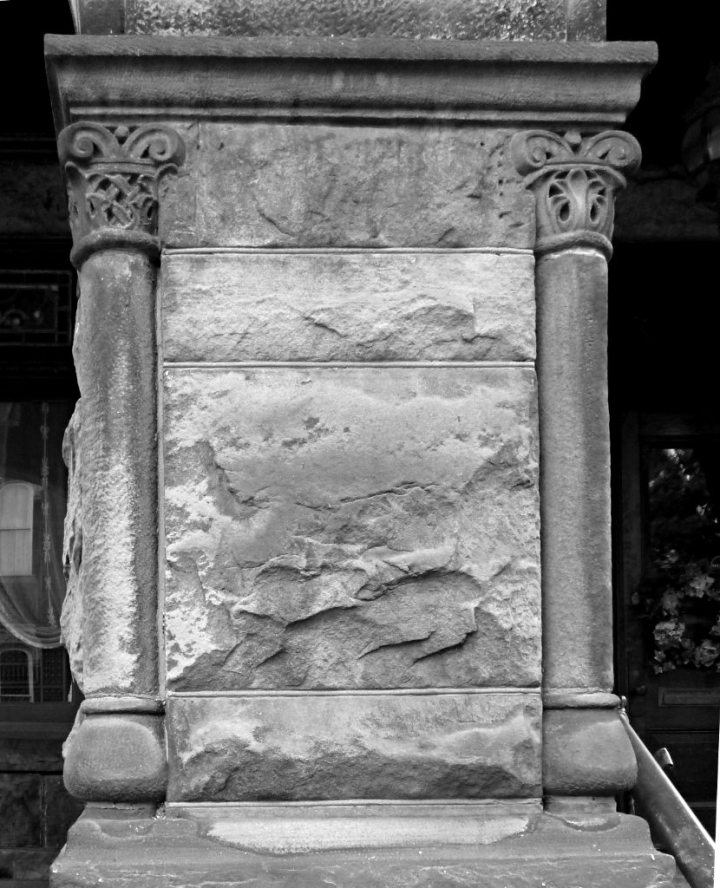
5 responses









